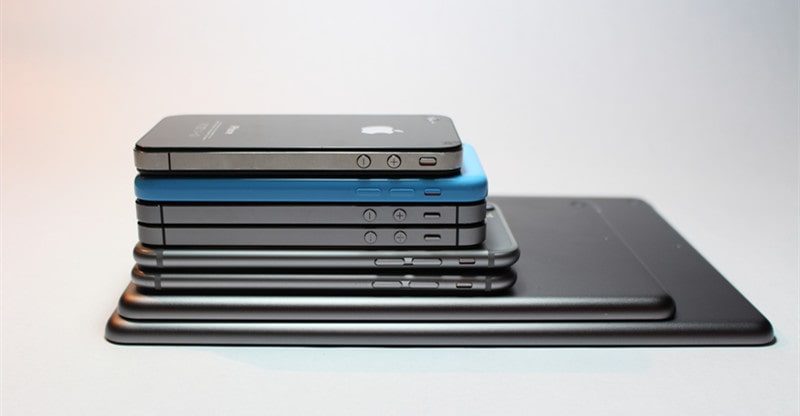What Are The Main Principles Of A Good Product Design?
Discussing how to design a good product is often like asking how long a piece of string is, the answer is entirely dictated by the situation at hand and the context of the item being developed. For instance, we wouldn’t use the same ideals for a garden chair as we would for a software package.
Well, that might be true in terms of its finer elements. A garden chair may not be able to schedule instructions for your printer to work, for instance. But in the broader view, it’s true to say that some universal principles exist. Good product design, that is design related to its utility, interactiveness, function, reliability and more are ideals that can be applied from product to product, no matter if you’re designing safety equipment for kitchen staff or a remote control for a television.
In this post, we’ll discuss what some of those universal principles are, how to apply them, and what mistakes you should concern yourself with avoiding. As that happens, you’ll be in the best possible situation to resolve issues from now into the future:
Design Testing
It’s essential to make sure that products are reliably constructed, yes, but also that quality is assured and that tests are carried out to indicate any problems should stress be applied. For instance, PCB Layout and design services can ensure that an electrical product functions under all reasonable use-cases, allowing you to make sure that your product gains a reputation for being robust, useful, and functional.
Design testing of this nature is essential, be that from implementing the necessary checks for technical measures like with our PCB example or in terms of software stress testing, or it might mean ensuring that a car’s safety seatbelt can function even under tremendous momentum and pressure from a potential accident. Those crash test dummies aren’t solely intended for fun.
Remember that while you may have great liability insurance, it’s fundamentally important for us to become aware of problems now rather than allowing the general public or our given audience to identify problems in the worst possible sense. Any product design process that fails to incorporate solid testing, then, is incomplete.
UI/UX Design
UI and UX design are different in scope, but similar in principle. UI stands for user interface, which is often a term related to software and how the user interacts with it. Think of how social media apps showcase your format for ‘liking’ and interacting with other posts, as well as how devices with screen controls will present their display.
UX standards for User eXperience, and as such is concerned with the total engagement for how a potential user may interact with a given product. On a rudimentary level, a chair with adjustable arms would be considered a product with good UX, because the ergonomic function allows sitting in the chair to become more comfortable and easy to interact with. It can apply to almost anything, from how simple shower controls are to figure out in a new unit, to how easy a handle is to grip while you open a package.
Consider both of these regarding your product, and identify problems now. Often, hiring UX/UI consultants can help you get a better idea of how your product design is shaping up, and many firms employ them in-house due to how important that role is.
Safety & Protection
Safety is an essential element of any product design. Sure, testing gets you some of the ways there, but no matter what the product is, it will require safety and security features that are more than foolproof. For software, this might entail cybersecurity updates that come through online distribution, using an auto-updater to make sure the latest version is always provided.
In another example, for instance, a cleaning product, a screw-on tight-fitting anti-child cap might be necessary, so that even the strongest and most intelligent toddler will have no way to open the cap thanks to needing to overcome a two-step process before they can. Even in products we consider dangerous, such as a chainsaw, meticulous safety features such as kickback guards, chain breaks, and the need to hold the throttle can help drastically reduce the chance of injury with proper use.
Stated Functions
It’s important for products to make sure they fulfill their main design purpose accurately and thoroughly before committing to further features. A glow-in-the-dark mug is pretty cool, but if it fails to hold liquid in a level fashion, and if the design rubs off after being heated by boiling water, then that’s a safety risk while also preventing the necessary function from taking place in the first place.
Make sure priorities are aligned and don’t be afraid to simplify in the name of quality. For instance, you can design the most worthwhile and expensive watch in the world, but if the strap is uncomfortable for the average human wrist, it fails in its function.
Reliability
Consumers demand products that are reliable. Sure, we expect to replace some items depending on their disposability. No one expects to reuse the same set of balloons over and over, or to wear the same rubber gloves time and time again.
That said, we need to rely on the product for its functioning. This might mean improving the tensile strength of resistance bands, ensuring that the handles properly fit, or that a water filter has an appropriate snout that can be relied on to pour water accurately after the fact. Reliability is essential to get right, because without it, then your brand’s image can be impacted.
With that in mind, you’re sure to focus on the main principles of good product design in the best possible sense. With a combination of design testing, UI/UX design, safety and protection, stated functions being met and reliability assured, you’ll be in the best place to curate a reliable, worthwhile end result. In the long run, this can make all the difference. Who knows what excellent products you’ll have designed in line with these procedures ten years from now?



